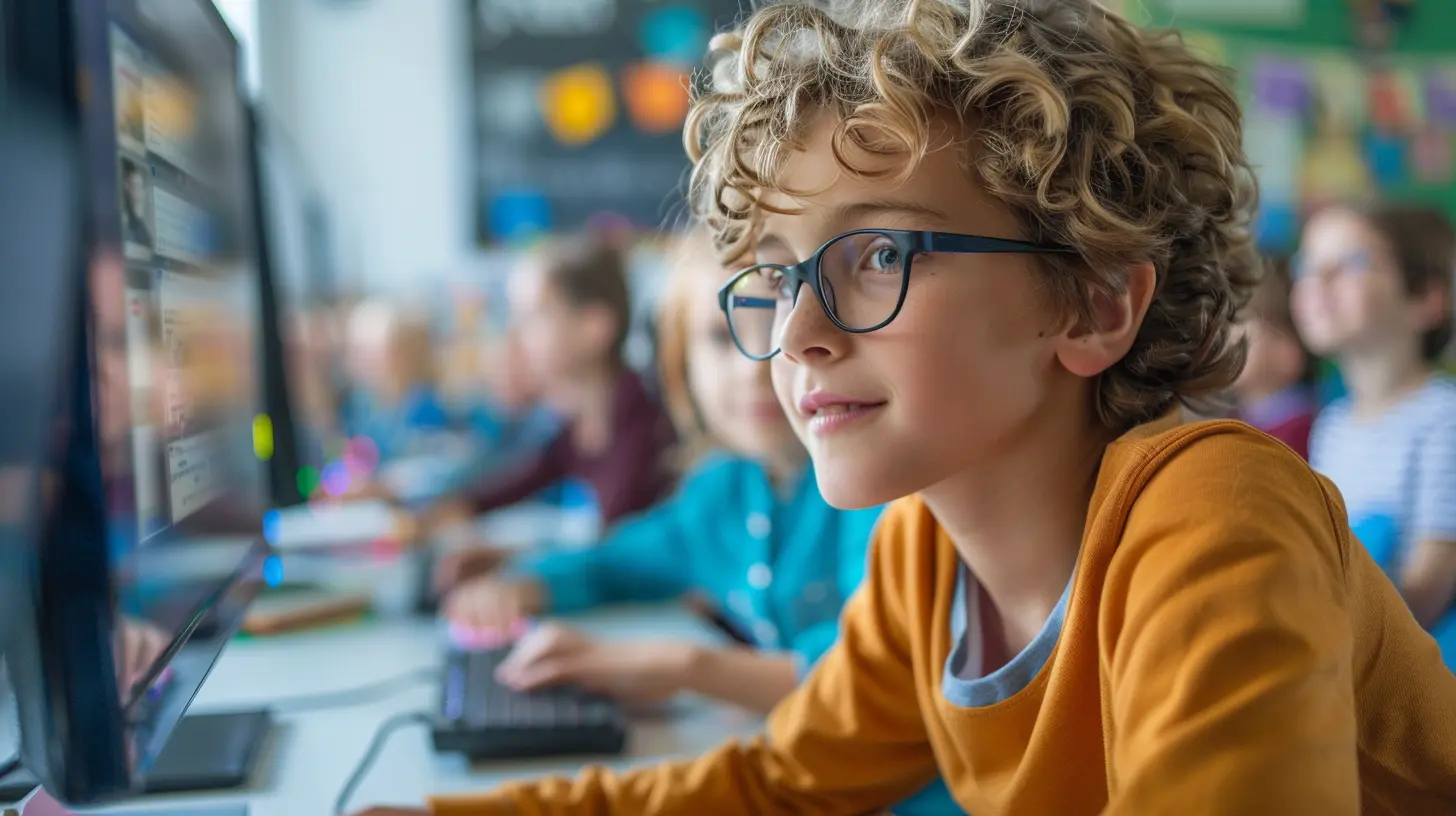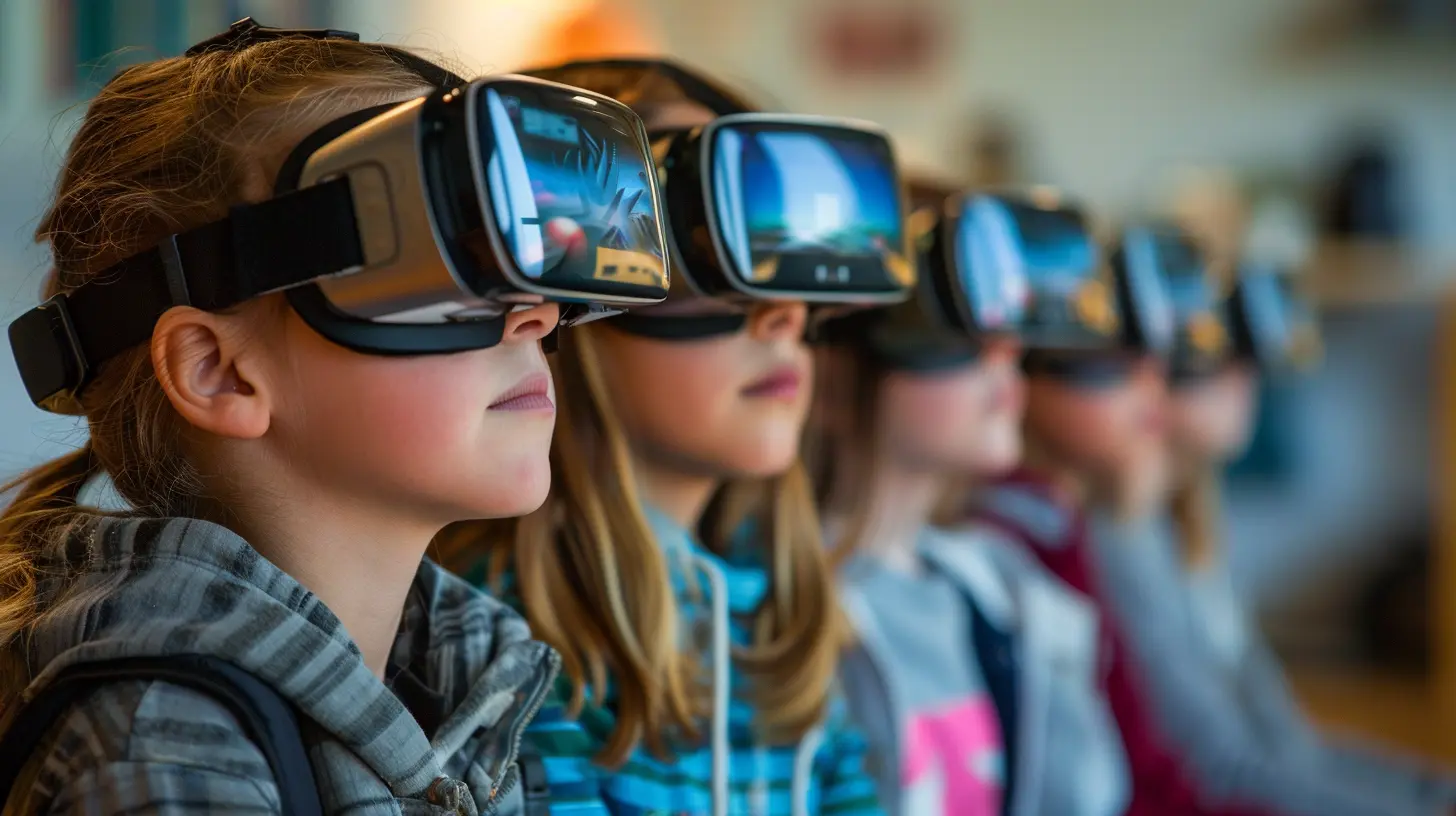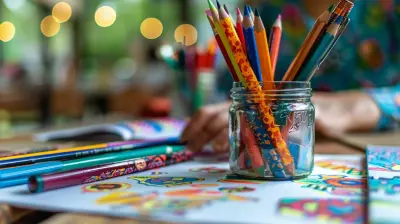The Importance of Reflection and Feedback in Virtual Classrooms
24 June 2025
The digital classroom is no longer a futuristic fantasy — it's here, and it's growing. From cozy corners of bedrooms to bustling cafés with free Wi-Fi, students now attend school with a click, a scroll, and a screen. But in this grand shift from physical desks to virtual desktops, something deeply human tries to find its way through the pixels: connection, growth, and understanding.
Two often overlooked yet powerful forces at play in any learning environment — especially in virtual ones — are reflection and feedback. They're not just buzzwords educators toss around in staff meetings. They are the heartbeat of learning, the compass that points students toward growth. Without them, learning can feel like walking through a maze blindfolded. But with them? It's like having a flashlight and a map.

What Is Reflection in Learning?
Let’s start with reflection. No, we’re not talking about gazing into a mirror (though a little self-appreciation never hurts). Reflection in learning is about pausing, looking back, and asking some simple but transformative questions:- “What did I learn today?”
- “What confused me?”
- “What can I do better next time?”
It’s not about being perfect. It’s about being present.
Imagine traveling cross-country without ever consulting a map or checking a GPS. You might move forward, sure, but are you heading the right way? Reflection is that GPS. It helps students stop, breathe, and make sense of what just happened in their virtual classrooms.

Why Is Reflection So Crucial in a Digital Environment?
Let’s be real — online learning isn’t always sunshine and rainbows. Distractions are everywhere, faces are tiny squares on a screen, and motivation can dip fast. Students often feel like they're learning in isolation, even when technically "in class."That’s where reflection saves the day.
It Promotes Active Learning
Instead of blindly consuming information, reflection nudges students to get involved. It transforms passive learners into active explorers. They stop and think rather than just clicking "Next."It Builds Self-awareness
Reflection is like holding up a mirror to your brain. “Where do I shine?” “Where do I struggle?” This honesty helps learners take charge of their own progress.It Encourages Critical Thinking
It’s not about memorizing answers — it’s about understanding the "why" and the "how." Reflection gives students the playground to ask questions and challenge what they’ve learned.
The Art of Feedback: A Two-Way Street
Now, let’s shift gears and chat about feedback. If reflection is the internal voice, feedback is the external one — a teacher's (and sometimes peers’) way of saying, “Here’s how you’re doing, and here’s how to level up.”But here’s the kicker: Not all feedback is created equal. A generic “Good job” won’t cut it. Feedback should be thoughtful, timely, and specific. Otherwise, it’s like whispering into the void.
Why Feedback in Virtual Classrooms Matters More Than Ever
In a physical classroom, students can read their teacher’s expression, hear tone changes, and feel the vibe. But online? That emotional nuance often gets lost in translation.That’s why solid, meaningful feedback matters like never before. It bridges the emotional gap of digital spaces. It replaces the missing “nod of approval” or the teacher’s raised eyebrow that says, “Think again.”
It Builds Confidence
Even a simple note like, “I saw how hard you worked on this” can light up a student’s day. Feedback tells them, “I see you. I’m here.”It Clarifies Expectations
Sometimes, students don’t know where they stand — especially online. Feedback clears things up. It tells them what’s working, what’s not, and how to close the gap.It Drives Improvement
Feedback isn’t just about praising or pointing out mistakes. It's about guiding. “Try this approach next time,” or “Consider another example here.” It's like a coach whispering strategies from the sidelines.
Combining Reflection and Feedback: A Supercharged Learning Experience
Okay, so we’ve talked about reflection and we’ve talked about feedback. But here’s the magic: when you combine them, they create a feedback loop of growth.Think of it like learning to ride a bike. Reflection is you thinking, “I leaned too far to the left on that turn.” Feedback is your parent saying, “Try looking ahead next time.” Together, you adjust. You get better. You fall less and ride further.
Encouraging Reflective Feedback
Smart teachers go one step further and ask students to reflect on the feedback they receive. “What does this feedback mean to you?” “How will you act on it?” This makes feedback a dialogue, not a monologue.Peer Feedback: Gold Mines in the Making
In virtual classrooms, students can also learn tons from each other. Peer feedback encourages a sense of community, collaboration, and perspective. Hearing how a peer interpreted your project can open your eyes in ways a teacher’s voice might not.Reflection Techniques for Virtual Learners
Now let’s talk tools and strategies. Reflection doesn’t have to be a formal essay every time. It can be quick, colorful, and even fun:Reflective Journaling
A weekly blog or private journal post (typed or handwritten) where students answer prompts like:- "What challenged me this week?"
- "What am I proud of?"
- "What would I do differently?"
Video Diaries
Sometimes, students express more through their voice than their writing. Allowing video reflections adds a personal touch and builds speaking skills at the same time.Exit Tickets
Simple, powerful. Before logging out of a virtual lesson, students answer one or two quick questions. “What’s one thing you learned today?” “What’s one question you still have?”Canva or Padlet Boards
For the more visually inclined, tools like Canva or Padlet let students reflect using images, colors, and captions. They can create a digital mood board of their learning journey.
Feedback Methods That Work Online
Giving feedback online can feel like shouting into a black hole — but it doesn’t have to. Here’s how to make feedback click and stick:Audio Feedback
There’s something magical about hearing a teacher’s voice. Tools like Mote or VoiceThread allow educators to leave voice comments that feel more human and less robotic.Screen Recording Reviews
Use Loom or Screencastify to record feedback while showing the student’s work. It’s like sitting side-by-side, walking them through suggestions.Rubrics and Checklists
Clear, detailed rubrics help students know exactly what’s expected. They also make the feedback feel less subjective.Comment Banks (But Personalized)
Reuse common feedback phrases, sure. But always personalize the ending. “You’ve done well explaining your point, Jaden. Next time, maybe try using a real-life example to make it more relatable.”Challenges? Of Course. But Not Roadblocks.
Let’s be honest. Reflection and feedback online aren’t always smooth sailing.- Some students rush through reflections.
- Others read feedback but never apply it.
- Teachers get bogged down writing endless comments.
But challenges don’t mean “impossible.” They just mean we need to rethink our approach.
Make It Routine
Make reflection and feedback part of the classroom rhythm. Not a one-off thing. Not a “when we have time” task. Make it part of every lesson, every week.Keep It Low-Stress
Reflection doesn’t need grading. Feedback doesn’t need to be fancy. What matters is that it’s authentic and consistent.Empower Students
Train them to give feedback just like they receive it. Teach them how to reflect. These are life skills, not just classroom strategies.
Final Thoughts: The Heartbeat of Learning Online
At the end of the day, virtual classrooms aren't just about clicking links and submitting assignments. They're about human connections through cables and code. Reflection and feedback make the learning personal. They add warmth to the cold screen. They invite dialogue where once there was silence.If you're a student, take the time to pause and ponder. If you're a teacher, take the time to speak and support. And if you're someone designing virtual learning spaces — make room for both.
Because when we reflect, we learn. And when we’re given thoughtful feedback, we grow.
So, here’s your homework (yes, even for you): Before you log out for the day, ask yourself — “What did I really learn today?” And if you’re lucky, someone thoughtful will answer back with, “You’re doing great. Here’s how to do even better.
all images in this post were generated using AI tools
Category:
Virtual ClassroomsAuthor:

Zoe McKay
Discussion
rate this article
2 comments
Delia McAnally
Thank you for shedding light on the crucial role of reflection and feedback in virtual classrooms. Your insights remind us that fostering a supportive learning environment is essential for student growth. I appreciate the practical tips shared and look forward to implementing these strategies in my own teaching practice.
November 22, 2025 at 12:02 PM

Zoe McKay
Thank you for your thoughtful response! I'm glad you found the insights helpful and I hope the strategies make a positive impact in your teaching.
Jaxon McAdoo
In virtual realms of learning, reflection ignites growth; feedback shapes our paths to wisdom.
July 3, 2025 at 5:04 AM

Zoe McKay
Thank you for your insightful comment! I completely agree that reflection and feedback are essential for fostering growth and deeper learning in virtual classrooms.


